2023-24 Detroit Pistons vs. 2011-12 Charlotte Bobcats: Who wins?
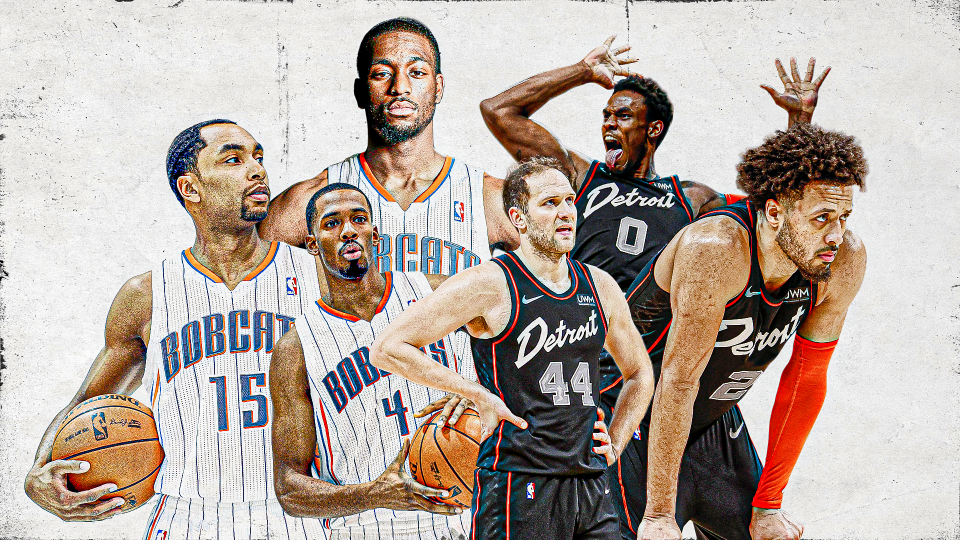
What happens when a stoppable force meets a movable object on the NBA hardwood?
That’s what we’re here to discuss today, as we break down a potential matchup between the 2023-24 Detroit Pistons and the 2011-12 Charlotte Bobcats.
If you recall, that Bobcats team set the record for the worst winning percentage in an NBA season after they went 7-59 for a 10.6 win percentage. That year’s Charlotte team lost its final 23 games of the season, meaning Bobcats fans had to go from March 17, 2012, until Nov. 2, 2012, without seeing their team win a single game.
This year’s Pistons squad, meanwhile, as of Dec. 27, 2023, has lost 27 games in a row – an NBA record for consecutive losses in a single season – and sits at 2-28 on the year. The overall losing streak record still belongs to the 2014-15 and 2015-16 Philadelphia 76ers but considering they lost 28 in a row over two campaigns – just one more than the current Pistons – Detroit could very well break that record, too.
Below, let’s get into the player matchups, and respective benches and coaches to figure out who would win: the 2023-24 Detroit Pistons or the 2011-12 Charlotte Bobcats.
Point guard: DJ Augustin (24) vs. Cade Cunningham (22)
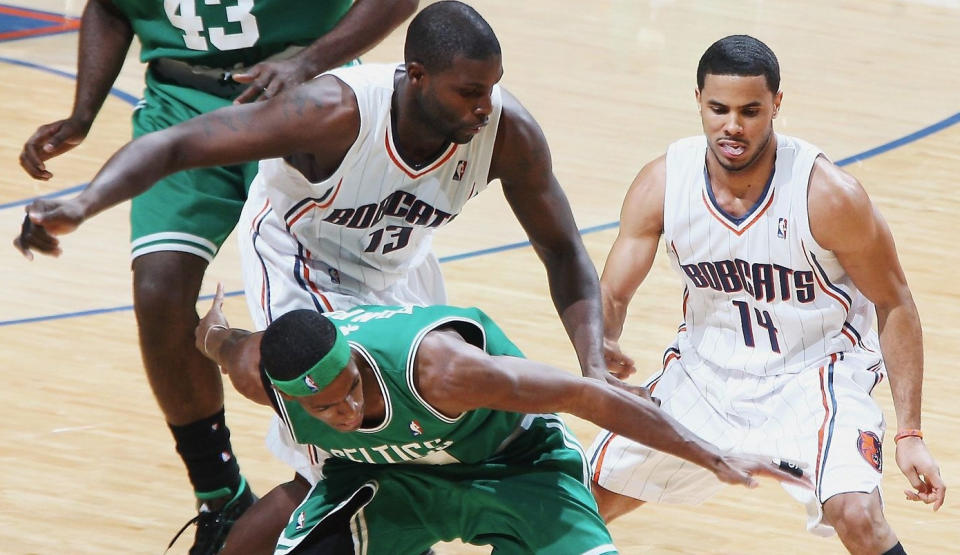
At starting lead guard, we have a matchup between an age-24 DJ Augustin and 22-year-old former No. 1 overall draft pick, Cade Cunningham.
Although Cunningham’s career is a bit of a disappointment – at least so far – it’s still leaps and bounds better than Augustin’s was at any point. So far in 2023-24, Cunningham is putting up 23.0 points, 4.1 rebounds and 7.0 assists on 44.5 percent shooting. Augustin, on the other hand, never averaged more than 11.1 points or 6.4 assists in a campaign.
Specifically in 2011-12, Augustin averaged 11.1 points, 2.3 rebounds and 6.4 assists on 37.6 percent shooting… from the floor. Augustin ranked 179th in Box Plus/Minus (BPM) that year at -2.5. Cunningham’s BPM this year? -1.8, 149th in the NBA.
Augustin did deal with some injuries that season and was at the heart of a lot of trade scuttle – only sensical considering the Bobcats had drafted his replacement the summer prior when they took UConn standout Kemba Walker with the ninth overall pick in 2011 – though a deal never came to fruition and Augustin was allowed to walk in free agency the following summer to the Indiana Pacers.
Nevertheless, this matchup is an easy one to decide. Cunningham doesn’t just have better production than Augustin did in 2011-12, he’s also bigger, stronger and a far better scorer from all three levels.
Advantage: Pistons
Shooting guard: Gerald Henderson (24) vs. Ausar Thompson (20)
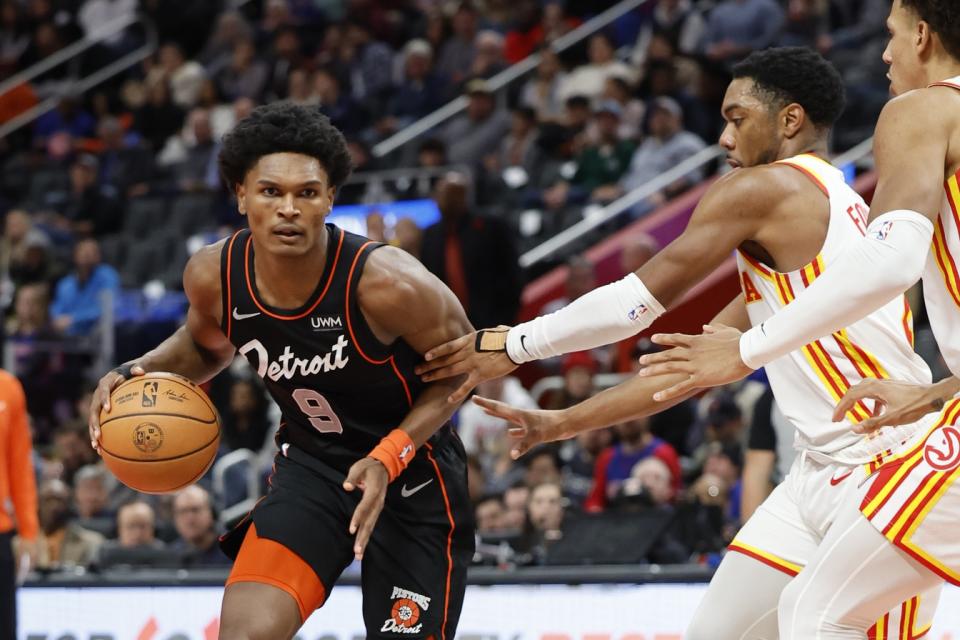
Former Duke Blue Devil Gerald Henderson was arguably the best player on the legendary 2011-12 Bobcats team, though being the leading scorer for the worst team in league history is not exactly a badge of honor.
Henderson had probably his best season in the NBA in 2011-12, his age-24 campaign, averaging 15.1 points, 4.1 rebounds and 2.3 assists while shooting 45.9 percent from the floor, though just an ugly 23.4 percent from three, a tough mark for a shooting guard. Henderson never did develop much of a three-point shot, though he was a solid midrange shooter, including off the dribble, and was pretty explosive around the basket. He had an old-school feel for the game with the ability to post up smaller foes.
Meanwhile, for the Pistons, rookie Ausar Thompson matches up with Henderson at this position. Thompson has shown a lot of two-way promise as a rookie thanks to his very unique length and size for a guard/wing, his incredible nose for rebounding and his scoring chops as a slasher. But he’s likewise not much of a shooter, making just 16.1 percent of his threes this season while averaging 9.5 points, 7.6 rebounds and 2.3 assists.
In the long-term, one can project Thompson to have a far brighter future than even Henderson’s peak thanks to his feel for the game – even as a playmaker – and his promise on both ends of the floor (he’s going to be a very impactful defender one day). But for this exercise, we have to go with the Bobcats’ 2-guard, as Henderson was a far more advanced scorer at that point in his career than Thompson is now and was already in Year 3 of his career.
Advantage: Bobcats
Small forward: Corey Maggette (28) vs. Bojan Bogdanovic (34)
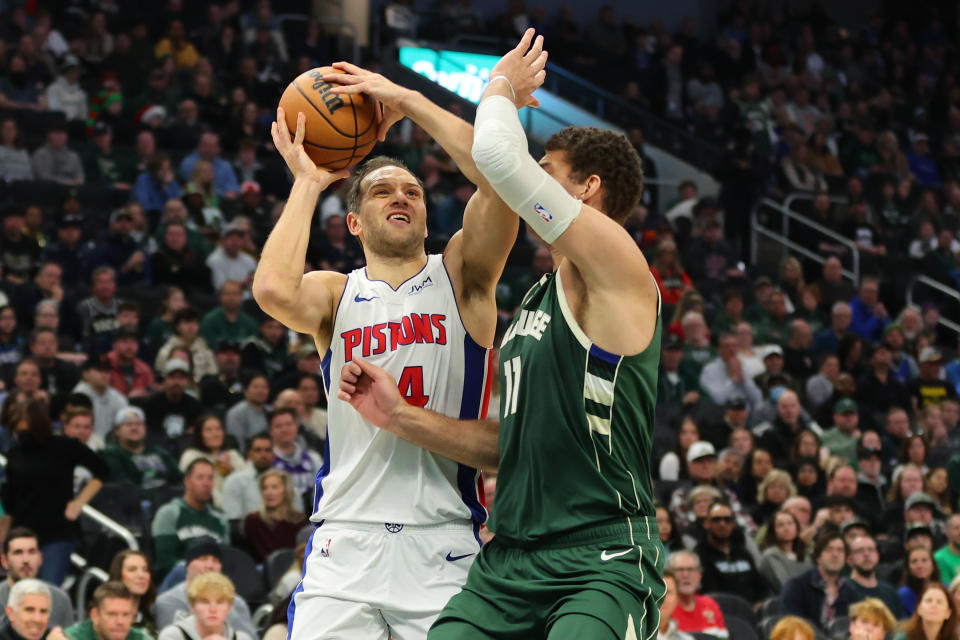
A matchup of two veteran wings who had injury troubles in the respective seasons at hand, Bobcats forward Corey Maggette, in his age-28 campaign, takes on modern-day Bojan Bogdanovic at the 3.
Maggette played just 32 games in 2011-12 due to a knee injury, one that he was able to return from that year but definitely not at full strength. In those 32 games, Maggette averaged 15.0 points and 3.9 rebounds while shooting 36.4 percent from three, though just 37.3 percent from the floor. Who knows? Maybe if Maggette doesn’t get hurt, the Bobcats don’t set the record for futility as they would have had someone else who could score from time to time, even inefficiently.
Bogdanovic, meanwhile, is currently putting up 19.9 points and 2.5 assists while hitting 46.6 percent of his shot attempts and 39.0 percent of his threes. Bogdanovic has a -2.1 BPM right now which might sound bad but is still a healthier mark than Maggette’s -3.9 BPM that season.
Pretty obvious who the better choice is here.
Advantage: Pistons
Power forward: Boris Diaw (29) vs. Isaiah Stewart (22)
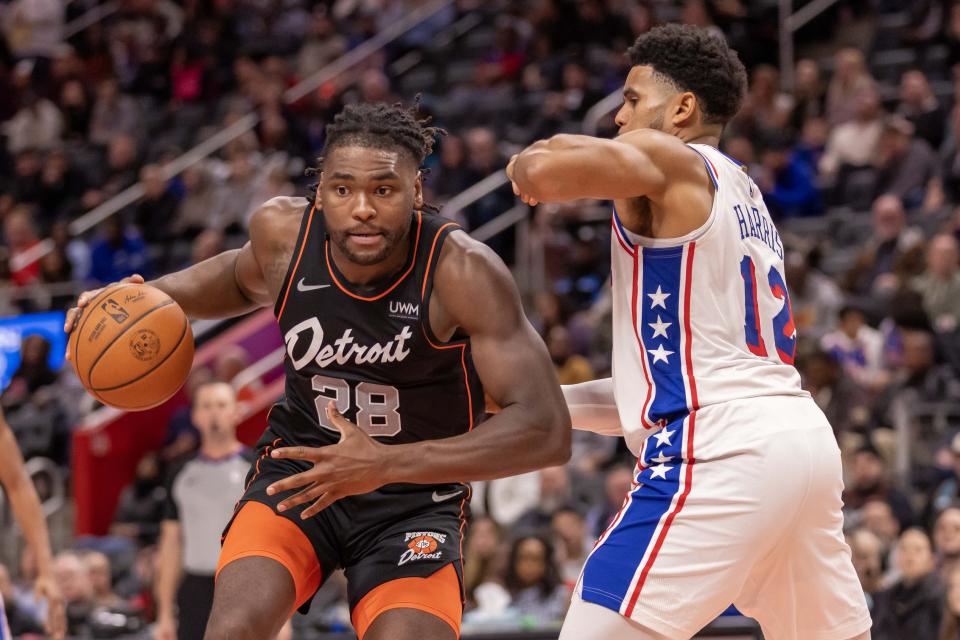
French forward Boris Diaw was an accomplished NBA player no doubt, but he clearly wanted no part of the Bobcats project. Diaw didn’t even make it through the entire 2011-12 season with Charlotte, getting bought out by the Bobcats in March 2012 before he joined the San Antonio Spurs, where he’d became a vital member of the 2013-14 championship-winning team.
(There’s something about French players reviving their careers after leaving Charlotte. Nicolas Batum, like Diaw, did just that years later, too.)
Then-Charlotte head coach Paul Silas, when asked about Diaw around the time of his buyout, did not hold back in his assessment of the then-29-year-old (via the Charlotte Observer):
Diaw played only twice in his last eight games with the Bobcats and has had a strained relationship with coach Paul Silas, who was quite critical of his effort. Silas described his frustration with Diaw on March 7 before a home loss to the Utah Jazz. “I like a player who is really committed to not only the team but to himself and then doing the best he can as a player,’’ Silas said. “Some of the things that would go on, like not shooting the ball, passing all of the time’’ were unacceptable. “I needed hoops and he could put the ball in the hoop. When that wouldn’t happen it was very disturbing. I think if he had played all out, the way he should have, it would have been a much, much better club.”
On the other hand, head coach Monty Williams and the Pistons are currently starting fourth-year center Isaiah Stewart at the 4, and although he’s spacing the floor well enough (39.8 percent from three on 3.5 nightly attempts), he doesn’t handle the ball or create for others all that well, nor does he move his feet on defense as quickly as you’d like for a power forward, giving Detroit a very old-school frontcourt that seems to be one of the main reasons why it’s struggling as much as it has this season.
Stewart is averaging 10.4 points and 7.0 rebounds this season in comparison to Diaw’s 7.4 points, 5.3 rebounds and 4.3 assists at the time he was bought out from Charlotte.
This matchup is tricky to select because Diaw was pretty much totally checked out in Charlotte before his buyout. But let’s pretend both teams know the title of Worst Team Ever is at stake if they lose and we get an engaged Diaw to face Detroit… don’t you think he’d absolutely cook the fairly slow-footed Stewart on the perimeter?
Diaw was a load to defend when he was focused because he could back down just about anyone thanks to his size, and he was a very good ball-handler and creator, especially for a power forward. We just think Stewart would have had a really tough time defending a 4 as versatile as Diaw was, especially 20 feet away from the basket.
Advantage: Bobcats
Center: Bismack Biyombo (19) vs. Jalen Duren (20)
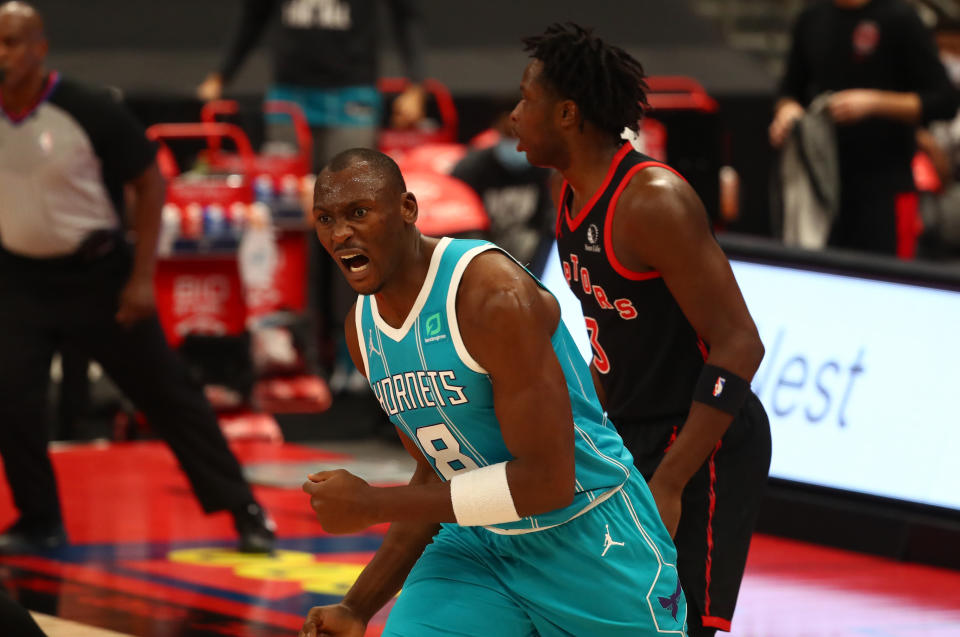
When big man Bismack Biyombo was drafted seventh overall by Charlotte in the 2011 draft, it was clear he was going to be a long-term development project due to his inability to score outside of dunking. Biyombo also had very unreliable hands, bobbling just about any pass made to him with traffic around him, and he was a terrible free-throw shooter, too, so opponents knew they could just foul him if he did catch the ball near the rim.
So, naturally, the Bobcats made him their starting center a little more than a month into the season, with Biyombo going on to average 5.2 points, 5.8 rebounds and 1.8 blocks on 46.4 percent shooting from the floor that year.
On the other hand, not only is Pistons center Jalen Duren more promising long-term than Biyombo was, but he’s already better than the Congolese center was even at his peak, as Duren is averaging 12.5 points, 11.2 rebounds and 1.3 blocks on 62.3 percent shooting this season. The reason he isn’t making an even bigger impact is due to sharing the frontcourt with another traditional center in Stewart but even then, Duren is making the Pistons 6.9 points per 100 possessions when he’s on the floor in 2023-24, a bright mark on a very dark season for the Pistons so far.
This one is very much cut and dry.
Advantage: Pistons
Backcourt depth
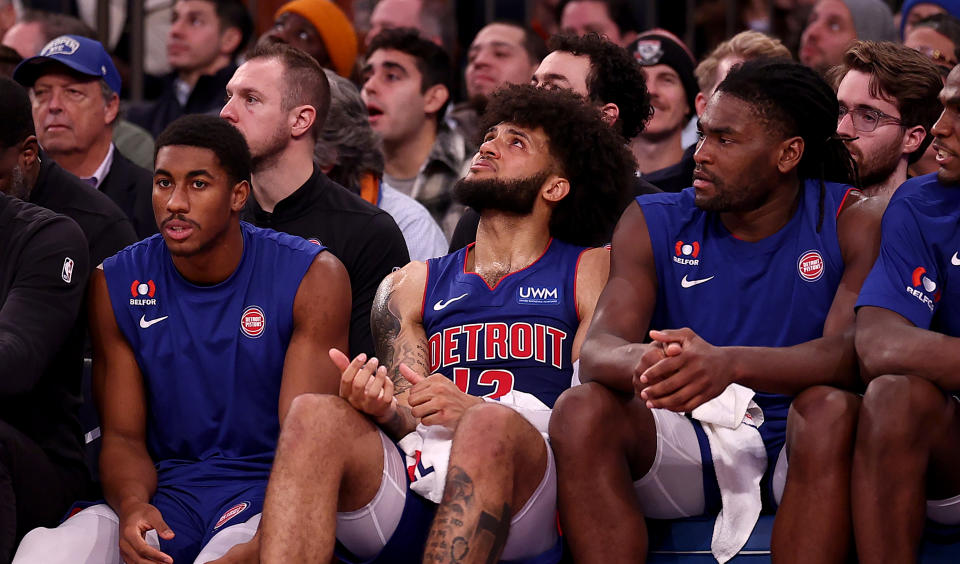
The key matchup as far as backcourt reserves go is between Charlotte’s Kemba Walker, a rookie at the time, and Detroit’s Killian Hayes.
Walker was pretty good from the jump as an NBA player, averaging 12.1 points and 4.4 assists in his first year, though on porous shooting marks of 36.6 percent from the floor and 30.5 percent from three. Hayes, meanwhile, is now in Year 4 after being drafted seventh overall in 2020, posting a career so far not at the standard of a former Top 7 pick. The French ball-handler is putting up 9.1 points and 4.4 assists this season while shooting 42.5 percent from the floor but 30.5 percent from three.
The other key backup guards for Detroit are Monte Morris, Alec Burks, Jaden Ivey, Marcus Sasser and Joe Harris, truth be told not a bad group – and certainly not a group that would lead you to think they’re the cause of a 2-28 team.
The key backup guards for the 2011-12 Bobcats, on the other hand, were a pretty rough group outside of Walker, featuring journeyman Reggie Williams, rookie-year Cory Higgins – who has been a very solid player since 2015-16… in Europe – and a 31-year-old Matt Carroll, who was nearly out of the NBA at that point.
So even if rookie-year Kemba could outplay the sometimes-unreliable Hayes, Detroit still has a much stronger group of backup guards than the Bobcats did.
Advantage: Pistons
Frontcourt depth
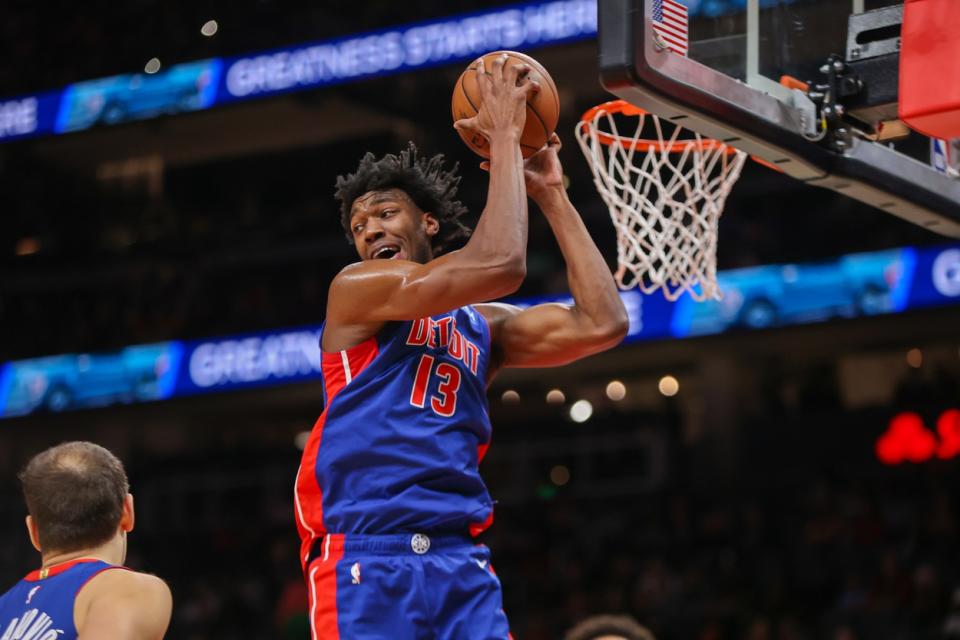
The Pistons’ backup frontcourt, meanwhile, is pretty rough and far weaker than their backcourt counterparts. General manager Troy Weaver swung for the fences by picking up two young former No. 2 overall picks for cheap, Marvin Bagley and James Wiseman, but the moves have not quite paid off, with the former putting up 10.5 points and 4.8 rebounds while shooting 16.7 percent from three (remember, Bagley came out of Duke as a supposed floor-spacing big man) and the latter averaging 6.5 points and 4.1 rebounds, looking pretty uninspiring every time he’s on the floor for Detroit.
Outside of that duo, former lottery pick Kevin Knox and 25-year-old Isaiah Livers have likewise been pretty unimpressive for the Pistons, although Knox is shooting the ball pretty well.
Regardless, it’s not like the Bobcats’ backup frontcourt is any better. In fact, it’s probably even worse than Detroit’s. The Bobcats’ backup frontcourt included Tyrus Thomas two seasons before his NBA career ended, a 35-year-old Eduardo Najera averaging 2.6 points, Byron Mullens and DeSagana Diop in his second-to-last season in the NBA.
Detroit’s backup forwards and centers are bad. Charlotte’s were even worse.
Advantage: Pistons
Coaches: Paul Silas vs. Monty Williams
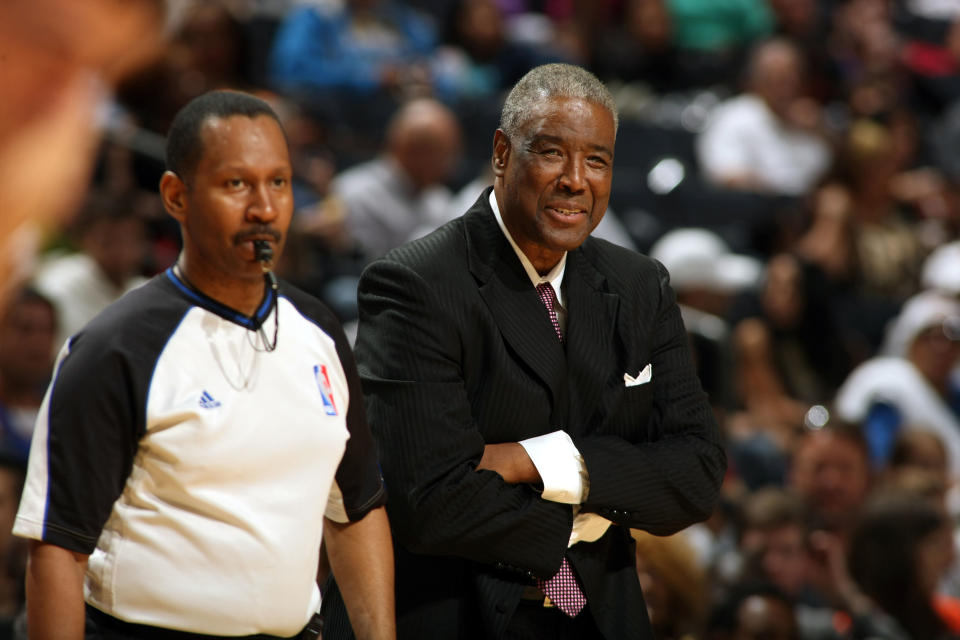
2011-12 was the final season of Silas’ coaching career, a career that started with Silas coaching the San Diego Clippers from 1980-81 to 1982-83 and included a stop as the Cleveland Cavaliers head coach for LeBron James’ rookie and sophomore campaigns.
Silas was a head coach for 875 games in his career, going 387-488 in the role before the Bobcats opted not to bring him back following the disastrous 2011-12 campaign. In his 12 seasons as a head coach, Silas’ teams had an above-.500 mark just four times, never winning more than 49 games in a single season. Silas did help lead two teams as far as the second round of the playoffs.
Williams, meanwhile, is 369-364 as a head coach in his career, which has included stops with the Phoenix Suns where he won Coach of the Year in 2021-22, as well as with the New Orleans Hornets, where he spent years coaching Chris Paul. Williams has seen his teams finish above-.500 five times, including in 2021-22 when his Suns went 64-18 before flaming out in the second round of the playoffs. Williams did lead the Suns to the NBA Finals once, in 2020-21, when the team even had a 2-0 series lead before falling in six games to the Milwaukee Bucks.
So even if Williams is struggling mightily to push the right buttons this season for Detroit, especially with lineup and rotation decisions, he’s still the better head coach in this matchup, as evidenced clearly by his resume.
Advantage: Pistons
Final verdict
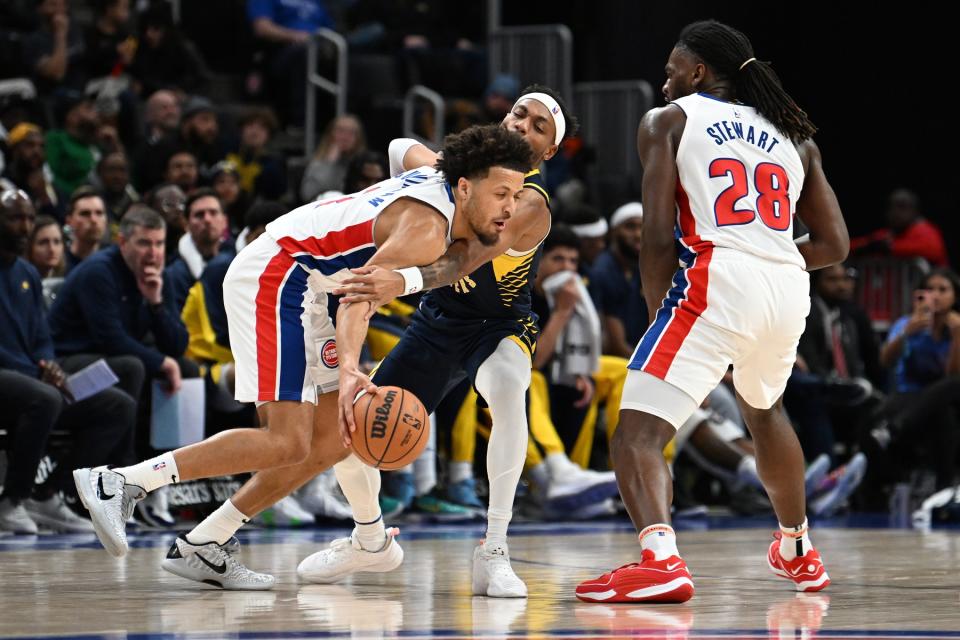
Going through this exercise, it’s clear that neither of these teams is completely devoid of talent. A lot of that talent – Cunningham, Kemba Walker, Duren – is just young right now or is/was totally checked out (Diaw).
This is just a clear case on both sides of the team being worse than the sum of its parts. We’ve seen much worse teams talent-wise (the 2002-03 Denver Nuggets, who were led by Juwan Howard and James Posey and went 17-65, come to mind) in NBA history, but even those teams were constructed better than the Pistons are. The Pistons simply have too many non-contributors in the frontcourt, littered with players who were once high draft picks who don’t even seem to totally love basketball, and not enough true wings on the roster.
The Bobcats, meanwhile, had a brutally bad combination of young talent that wasn’t ready, like Walker and Biyombo, with veterans who were not really into it (cough, Diaw, cough), be it due to disagreements with Silas’ coaching or whatever else. On top of that, Charlotte just didn’t have very high-level NBA players. The Bobcats’ fifth-leading scorer that year was Mullens for goodness’ sake, who was out of the NBA by the time he was 25.
So even if we do like Charlotte’s side more in some matchups – like a focused Diaw vs. Stewart on the perimeter or Year-3 Henderson against rookie-year Thompson – from top to bottom, the 2023-24 Pistons have a better roster than the 2011-12 Bobcats did, and we think Detroit would take the matchup if these two historically bad teams met on the hardwood.
In the end, although this Pistons losing streak has been nothing short of embarrassing, we still don’t think they’re deep in danger of breaking the 2011-12 Bobcats’ record for worst win percentage in a season or anything. They do have some solid talent and with tweaks by Williams to the starting lineup and rotation, we could see them starting to squeak out some wins in the not-so-distant future.
For the sake of Detroit fans, we hope we don’t have to eat those words in a few months.

